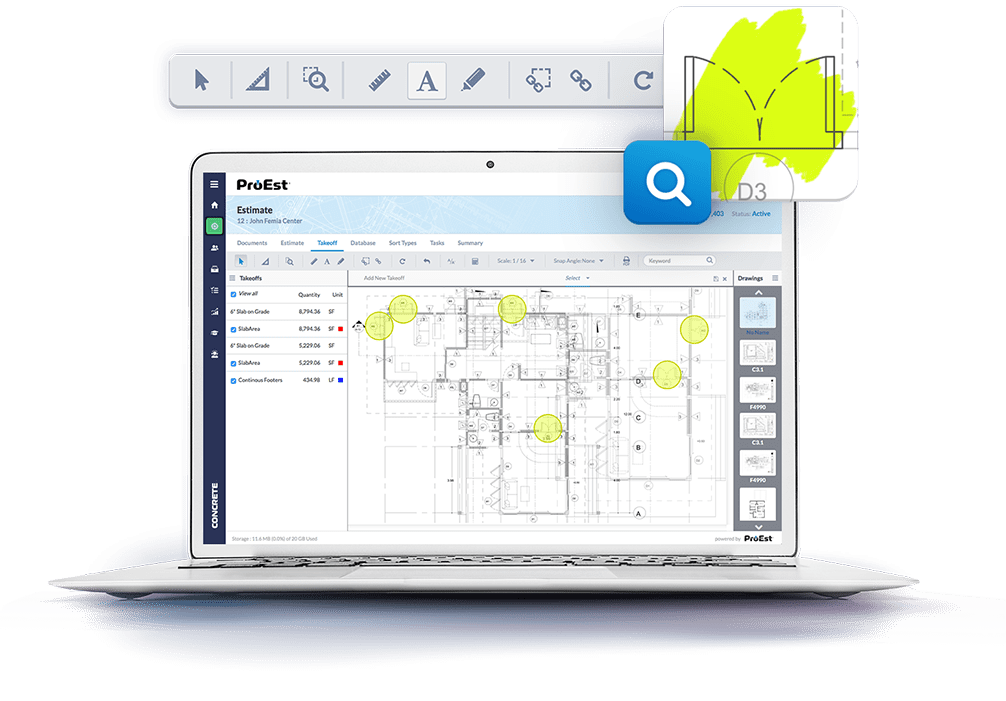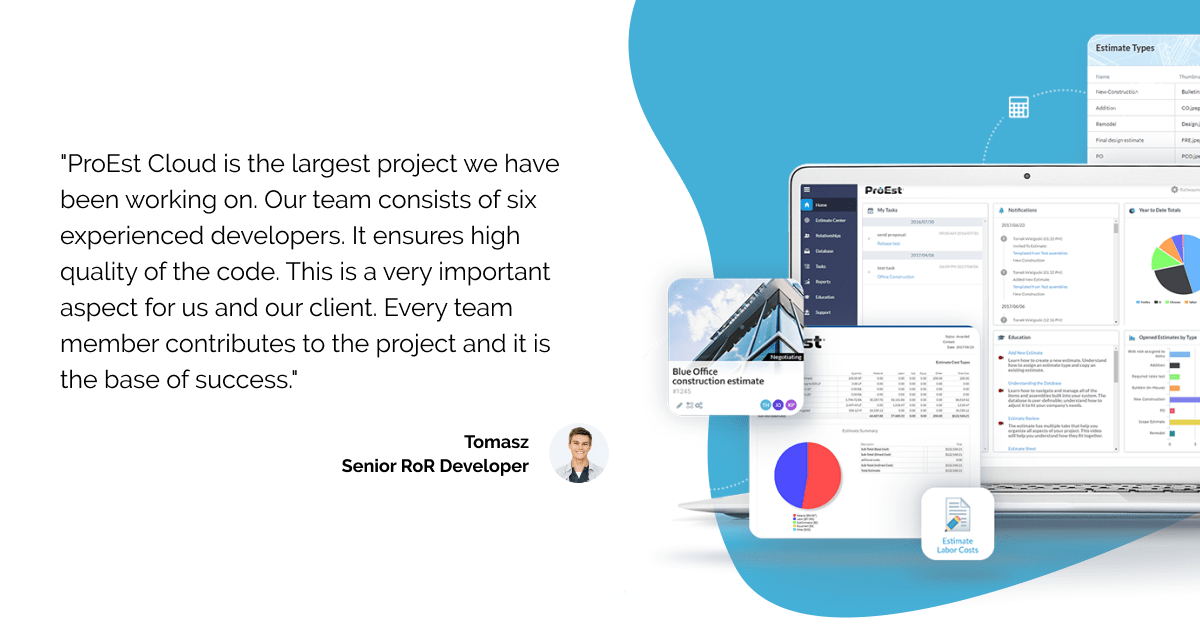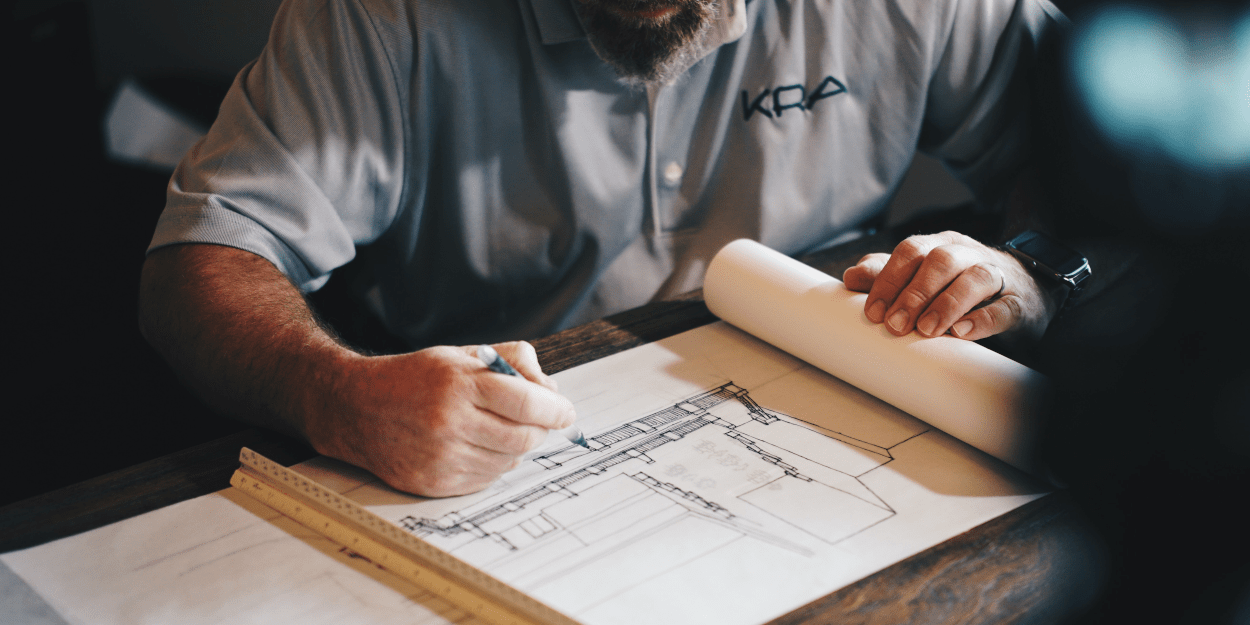I am a huge fan of the Sydney Opera House architecture. For me, characteristic roofs resembling gigantic, overlapping shells of mussels look like ships sailing on Sydney Harbour. Danish architect Jørn Utzon won the competition for the design and beat over 230 entries, although he didn't even meet all the competition conditions. He provided only a general Opera sketch. I wonder if he knew then that he designed one of the most famous buildings in the world? I'm delighted with this Opera, but the fact that this building cost 95 million above the first estimation gives me shivers. Yes, the construction costs exceeded the original estimate many times, and the commissioning of the building was postponed for 8 years. Because of the construction conflict, Jørn Utzon had left Australia. A group of young Australian architects completed the rest of the work.
Why are some construction projects underestimated? Construction projects are varied and usually need an individual approach to cost estimation. In short, construction cost estimating is the process of calculating the expense of the building. Proper cost calculation is extremely important because it allows outlining a project's scope, feasibility, and budgets. Overpaying is a big risk in the construction industry. That's why, nowadays, professional construction companies pay huge attention to accurate cost scope. Yet, the process is not easy because many factors contribute to the total valuation.
Table of Contents:
1. What is the purpose of cost estimation in the construction industry?
2. The main elements of a construction cost.
3. How to estimate construction costs? The 4 step process.
4. How to make calculating construction costs easier? Spreadsheets vs. Software.
What is the purpose of cost estimation in the construction industry?
I think I don’t need to convince anyone that cost estimation, in general, is a good practice for every Project Owner who wants to know how much money the project will require. Cost overruns in the construction industry like overestimation and underestimation can have terrible consequences and lead to the failure of the building.
That’s why builders and clients take their time and effort to estimate the project costs to determine project feasibility before deciding to start building. From developing new structures to remodeling old ones, every kind of construction project should have the cost estimation performed before moving forward. Although the cost estimation methods are rather widely known, we can still find the cases of spectacular overruns.
A few examples of underestimated famous construction projects:
- Scottish Parliament Building finally cost £414 million, while the initial estimates established about £10-40 million.
- Sydney Opera House was completed in 1973, having cost $102 million. The original estimates from 1957 oscillated around $7 million.
- London's O2 Arena (originally called the Millennium Dome) had big financial troubles during the building process; finally, the total cost reached a staggering amount of money around $976 million.
- Phase 1 of New York Second Avenue Subway was estimated to cost $3.8 billion, but it ended up costing $500 million over this budget.
Of course, calculating the cost of any project with perfect precision is really challenging. The goal is to avoid large-scale mistakes. With the right tool and techniques, it is 100% possible. I will tell you more about it in this article. Now, let's take a look at what exactly has an impact on construction costs.
The main elements of a construction cost:
The key to success is to take into account all necessary construction factors and create an accurate estimate. What are those elements? The truth is that in the construction industry cost relies on many various factors like: construction documents, which are crucial for understanding the project scope, ensuring accurate material takeoffs, and determining necessary resources and costs associated with the construction process.
Labor
The cost of the human effort needed to finish the building project. To calculate the total labor cost, we need to consider the number of labor hours (the amount per hour of one person working), the size of the crew, the number of days crew need to finish the project (scope of work), and the labor rate.
Materials
The cost of all resources needed to develop the construction project. To properly estimate the costs of materials, we should take into account the market variation and seasonal fluctuations because it impacts prices. The second important cost factor is the waste of materials. It's worth defining some percentage of it. The graphics down below shows a detailed list of materials category.

Subcontractors reward
The cost of the work supplied by the external company. Outsourcing of part of the responsibilities is a common practice in the construction trade. Most of the constructors hire various outside specialists or companies to develop some parts of the construction project. The valuation of the partner's work should necessarily appear in the cost estimation.
Equipment
Equipment costs relate to running or renting heavy machines like dozers, excavators, cranes, etc. Quality of equipment impacts the project completion time. That's why it has a big impression on the estimate of the total costs.
Indirect costs
Those expenses are not straight defined either fixed. Indirect costs depend on each project's requirements. We can specify here margins, taxes, insurance, legal support, charges because of delays, etc. The amount of the cost can be defined as a percentage or constant value.
Other costs
It is an integral component of the cost of a single item. Constructor decides what should appear in the "other costs" section. For example, it can be the cost of packaging, delivery, or insurance of the particular item.

How to estimate construction costs? The 4 step process
Cost estimate in construction is a demanding and time-consuming process. It is all about researching, crafting, and finally presenting a complete cost analysis of a building project. To ensure a high-quality cost report, estimators have to use the right tools and gather the proper information. Utilizing construction estimating software can streamline the estimating process, reduce human error, and increase efficiency in creating accurate cost estimates. Each construction project is unique and should be treated individually. Even if projects seem to be precisely alike, they need an individual approach to lower the probability of unexpected costs. We distinguish 4 main steps in construction cost estimation.
Step 1. Discovering construction project needs
At the first stage of cost estimating, the estimator has to work closely with the client and architects (or design team) to understand the needs, size, and scope of the project. We can say that it is an initial phase of the project that includes first meetings, conversations with the client, finding out the client's vision and expectations, and discussions about ideas with the architecture team. In the first phrase, estimators focus their work on getting familiar with project plans and schematics. Communication skills are highly required here.
It is also the time when estimators usually visit the actual construction localization. It helps to visualize the project and plan the logistics. Another important issue is the evaluation of environmental factors that may impact the project's cost estimate or deadline. While planning the construction project, it is necessary to consider every ecological regulatory requirement, such as the protection of habitats or species. Estimators can not forget about the influence of the local weather. Seasonal rain, snow, heat, or drought can have a vital impression on the construction process.
Step 2. Creating a list of materials & project's timeline
During the second step of construction estimate, the estimator starts to work on detailed cost analysis. Defining the necessary materials and outlining the time perspective for the building project is the main part of this phase. Both require processing vast amounts of information and considering many various factors.
When it comes to listing the needed materials, it is necessary to review the designs and schematics carefully. The list has to be complete and should include all of the materials, from the bricks and concrete to the finishing materials like electric light switches, radiators, and cleaning products. Otherwise, the cost estimate will not be reliable. The estimator has to include materials parameters such as weight, volume, size, storage considerations, and percentage of the loss. Seasonal price fluctuations can impact the budget and also should be included in cost estimates.
Drafting a realistic time perspective for the construction project is essential for project success. The determination of the completion date can be challenging and may not always meet the client's expectations. In fact, many factors can cause delays, such as unfavorable weather, subcontractor's unreliability, holidays, accidents, etc. The estimator has to be predicting.

Step 3. Determination of labor work & the whole project cost
The third phase focuses on specifying labor requirements and finishing the estimate of the entire project. It is a rather time-consuming process. It is necessary to define accurately how many workers will be required. To make a precise labor calculation, the estimator has to take into account the size and scope of the construction project, the target time for the project, and the availability of adequate labor to work. During this phase, the estimator cooperates with construction managers, subcontractors, and in some situations, with a union representative. One of the most critical factors influencing labor estimating is local regulations. Non-working days such as regional holidays, have to be included in the final calculation.
The labor estimate requires accommodating: every specific job position, the expected time workers need for the project, the total cost of the labor, and overtime or holiday pay. Lastly, the estimator also has to compare subcontractors' proposals and select the most suitable offer for the construction project. During the construction costs estimating process, estimators can not forget about applying the markups to the estimate. Markups are meaningful because they ensure that the bid is profitable for the contractor and can decide about winning the construction tender.
Step 4. Presentation of the detailed construction cost estimate and analysis
In the fourth phase, the estimator presents his work to persons involved in the project, such as the client, architect, and project manager. Clients usually consider several bids from different contractors and compare the offers. They take into consideration the level of detail and precision in estimating, the attractiveness of the offer, the time forecast for project completion, the contractor's experience and timeliness.
The final estimate presentation and winning the construction tender can be challenging. The estimator must demonstrate communication skills. Public speaking experience is valuable in this case. High-quality reports and eye-catchy presentations are crucial. Data should be present in a clear way so the client can easily understand it. While the construction process is complicated and many factors impact the final cost estimate, the estimator has to be able to explain even the most intricate details skillfully.
How to make calculating construction costs easier? Spreadsheets vs. Software
No doubt, accurate construction costs estimate is a time-consuming process that demands high analytical skills, building knowledge, ability to predict unplanned issues, and technical expertise. I think we all know that in business, time is money. In the construction industry, even a small delay is a risk of cost overruns and conflict with clients. It is worth looking for a solution that will speed up, improve the cost estimation, and get the project on the right track from the very beginning.

Let's take a look at the tools that can be used to estimate the costs. Actually, there are two main approaches, using the Excel Sheet or choosing the dedicated construction software. Which one is better?
Spreadsheets
Spreadsheets, like Excel, are high-performance tools with a lot of functionality. Unfortunately, it's hard to say that it is not an outdated solution nowadays. The risk of messing the data is quite significant. Well, we live in a digital world, and many construction companies already noticed that software can help them bide the projects successfully. The estimate has to be as accurate as possible, and with technology, it is much easier to achieve that. I need to be honest with you. Our construction clients say that sometimes it even took months before their employees learned manual data collection methods.What are the main problems with spreadsheets?
#1 The estimate can take too long.
During the work with a spreadsheet, the estimator has to be very precise. Tools like Excel require manual entering and formatting data. Even one piece of information in a wrong cell can throw off all calculation and force to start over again. It simply took time.
#2 The estimate can be inaccurate.
Spreadsheets can provide errors, especially when it comes to materials assumptions. Actually, this is the most common mistake during estimating work with sheets. While the economic, political, and climatic environment impacts construction development, the costs of materials can rapidly change. The estimator has to use an agile tool that will let him quickly react to fluctuations.#3 The estimate of large-scale projects may appear overwhelming.
Estimating for large-scale projects requires collecting a vast amount of data and then analyzing it. In this case, the estimator has to work on an expanded spreadsheet. Managing the workflow most efficiently is crucial, and it can be challenging to do that in a standard sheet with a lot of data.

#4 Spreadsheets are a versatile calculation tool rather than a specialistic estimate application for construction.
We can say that Excel is flexible, we can match it to our needs and build templates, but it is not an estimated dedicated application at all. We have to adjust to the tool rather than expect it will be tailored to meet our needs. That's why it causes issues.#5 Spreadsheets are not user-friendly.
Unfortunately, spreadsheets are rather inconvenient to use. Tools like Excel have a lot of extensive features that are not needed during construction estimating. Files with a large amount of data tend to load long and work slowly. In a sheet with thousands of rows and numbers, it's easy to overlook the mistake. The human eye simply won't catch it.#6 Spreadsheets still miss features that make estimating more comfortable and transparent.
Excel still does not allow us to embed a video and doesn't work well on mobile devices. It's difficult to protect the data, follow the changes made by team members, or detect irregularities. Excel sheets do not give opportunities to improve and grow business.
Software
Dedicated construction software build by the right construction technology company aims to improve the estimator's work and deliver the most accurate estimate possible. Those are the 2 main pros. Some of our clients joke that they build their own software to release the company from Excel ;)
Estimating applications calculate the costs in real-time. It is a kind of an advanced spreadsheet adjusted to most demanding estimators' needs. Dedicated software with cost estimating features allow using a big predefined database with thousands of construction elements and specifies their quantities, different types of costs or markups. Yes, it is possible to create a similar database in Excel, but it would be extremely tedious work. Imagine that you have to put every item into a sheet manually. In applications for estimating, like ProEst, the list is already built-in default feature.

Want to see an excellent example of construction costs estimates software? Check the ProEst, an application developed by us:
Click: Case study: ProEst Cloud-Based Construction Software
Another exciting feature is the Report Writer. This powerful function enables managers to create their custom reports and professional costs proposals. It is beneficial for preparing bid presentations.
Construction software like ProEst combines a large area of project management and helps define mechanisms for preparing a cost estimate for tenders. It can store files, customize construction estimation and designing processes. Thanks to that, estimators can focus 100% on their tasks.
Conclusion
During the bidding project process, constructors face a few hurdles, like competitors, tough negotiating conditions, price warfare, etc. The wrong estimating can fail the whole enterprise.
The main problem of estimators is that they are dealing with too much information at the same time. Usually, the collection of all data is the easiest step in the whole costs estimate. The analysis is demanding and requires analytical skills. Even trivial mistakes can severely impact the project and undermine trust and reputation. That's why it is so important to use the proper methods and tools during the estimate.
Excel is powerful, but it is not the most powerful software the constructors can use. Dedicated software can better streamline work management and construction estimating.
If you are wondering is it worth to build custom application for your construction business with external IT company, check our work:






